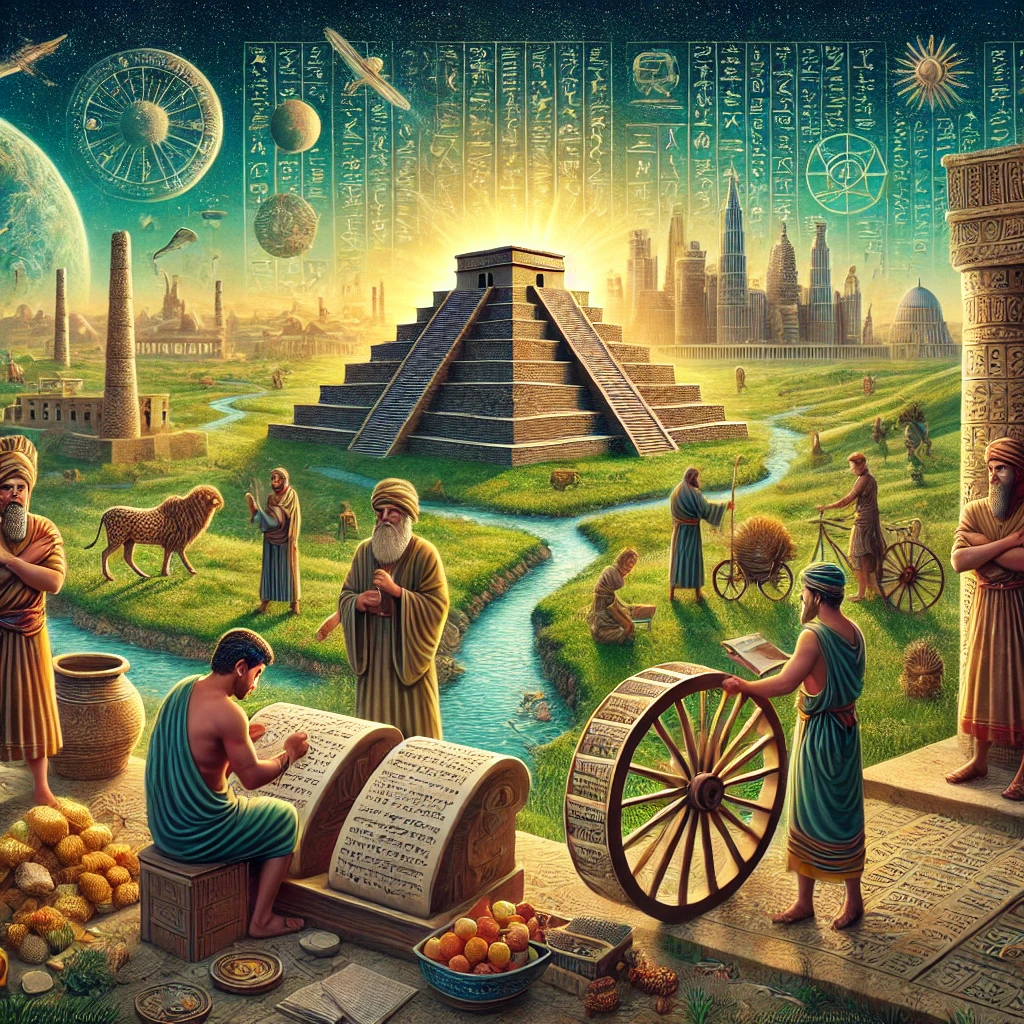ChatGPT:
Etymology of Mesopotamia
The name Mesopotamia derives from the Greek words:
• “Mesos” (μέσος): meaning “middle” or “between.”
• “Potamos” (ποταμός): meaning “river.”
Thus, Mesopotamia literally means “the land between rivers,” referring to the region situated between the Tigris and Euphrates rivers. The term was first used by the ancient Greeks to describe this fertile region.
Historical Names of Mesopotamia
Throughout its history, Mesopotamia has been referred to by various names based on the languages and civilizations that dominated or described the region. These names often reflected its geographical, cultural, or political significance:
1. Sumerian Period (c. 3100–2000 BCE)
• Ki-en-gir:
• The Sumerians, the earliest known civilization in Mesopotamia, called their land Ki-en-gir, meaning “Land of the Noble Lords.”
• This term referred specifically to southern Mesopotamia, the region later known as Sumer.
2. Akkadian Period (c. 2334–2154 BCE)
• Māt Akkadi:
• During the Akkadian Empire, the region was referred to as Māt Akkadi, meaning “Land of Akkad.”
• Akkad was a prominent city-state and cultural center in northern Mesopotamia.
3. Babylonian and Assyrian Periods (c. 2000–600 BCE)
• Māt Bābilī:
• The Babylonians called their kingdom Māt Bābilī, meaning “Land of Babylon.”
• Babylon, located in central Mesopotamia, became the cultural and political heart of the region.
• Aššur:
• The Assyrians referred to northern Mesopotamia as Aššur, after their capital city and chief deity.
4. Ancient Egyptian References
• Nahrina:
• Ancient Egyptians referred to Mesopotamia as Nahrina, meaning “The Land of Rivers.”
5. Biblical Names
• Shinar:
• In the Hebrew Bible, southern Mesopotamia is called Shinar (likely referring to Sumer).
• Aram-Naharaim:
• The northern region is referred to as Aram-Naharaim, meaning “Aram of the Two Rivers.”
6. Achaemenid Persian Period (c. 539–330 BCE)
• Athura:
• The Achaemenid Persians referred to the region encompassing Assyria and northern Mesopotamia as Athura.
• Southern Mesopotamia was incorporated into the satrapy of Babylonia.
7. Hellenistic and Roman Periods (c. 330 BCE – 7th century CE)
• Mesopotamia:
• The Greeks formalized the term Mesopotamia for the region between the Tigris and Euphrates rivers.
• The name persisted into the Roman and Byzantine periods.
8. Islamic and Medieval Periods (7th century CE onwards)
• Al-Jazira:
• In Arabic, northern Mesopotamia became known as Al-Jazira, meaning “The Island,” referring to the area between the two rivers.
• Southern Mesopotamia was often simply called Iraq, a name that eventually became synonymous with the entire region.
Summary of Names by Region
1. Southern Mesopotamia:
• Ki-en-gir (Sumerian)
• Shinar (Biblical)
• Babylonia (Akkadian/Persian)
• Iraq (Arabic)
2. Northern Mesopotamia:
• Aššur (Assyrian)
• Aram-Naharaim (Biblical)
• Al-Jazira (Arabic)
Conclusion
The names of Mesopotamia over the centuries reflect its evolving political, cultural, and religious identity. Known as the “Cradle of Civilization” for its role in the development of urban life, writing, and law, Mesopotamia remains a pivotal region in the study of ancient history. Its many names underline the region’s significance to different peoples and empires throughout history.
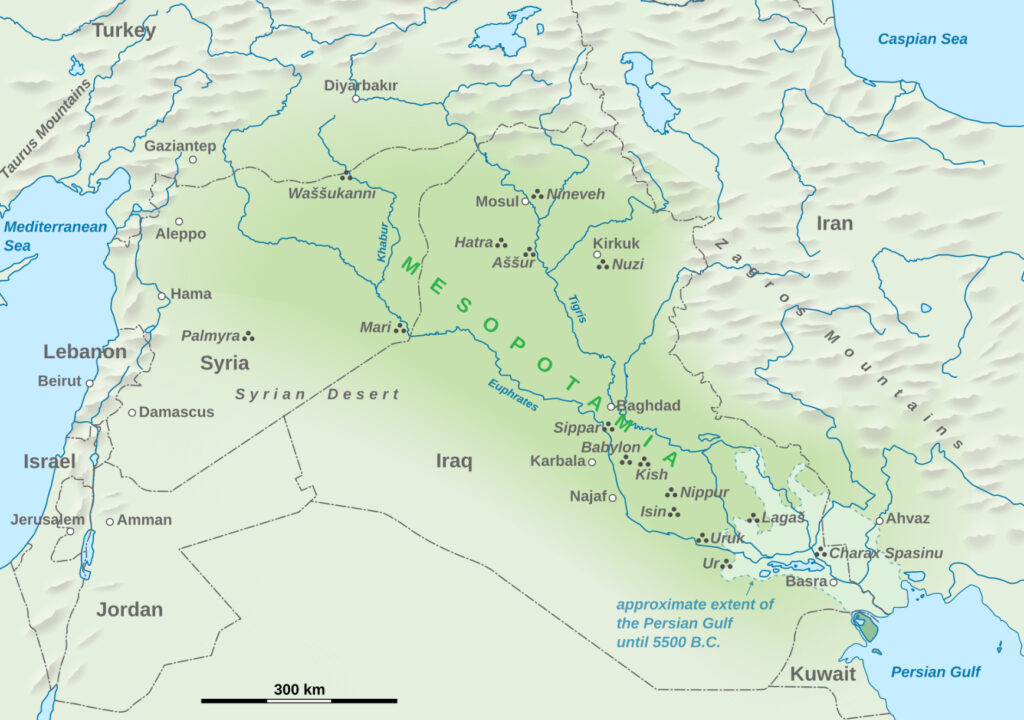
Geography of Mesopotamia
Mesopotamia, often referred to as the “Land Between Rivers,” is located in the heart of the Fertile Crescent, spanning parts of modern-day Iraq, Syria, Turkey, and Kuwait. It is defined by the Tigris and Euphrates rivers, which played a central role in shaping its geography and sustaining its ancient civilizations.
1. Geographic Features
• Tigris and Euphrates Rivers:
• These rivers originate in the Taurus Mountains in eastern Anatolia (modern-day Turkey) and flow southeast into the Persian Gulf.
• They provide irrigation for agriculture, making the surrounding lands highly fertile.
• Two Main Regions:
• Upper Mesopotamia (Northern Mesopotamia):
• Also called Al-Jazira or Assyria, it includes the plains and foothills of modern northern Iraq, northeastern Syria, and southeastern Turkey.
• The terrain is a mix of rolling hills, grasslands, and rivers.
• The rivers here flow faster and are less prone to flooding than in the south.
• Lower Mesopotamia (Southern Mesopotamia):
• Includes modern southern Iraq and parts of Kuwait.
• Characterized by flat, alluvial plains created by millennia of silt deposits from the rivers.
• Contains marshlands near the confluence of the Tigris and Euphrates.
• Alluvial Plains:
• The southern part of Mesopotamia is an expansive floodplain, formed by the silt deposited by the rivers over time.
• These plains provided the fertile soils that supported agriculture and the growth of early city-states like Uruk, Babylon, and Ur.
• Marshlands:
• The confluence of the Tigris and Euphrates near the Persian Gulf created extensive wetlands known as the Mesopotamian Marshes.
• These marshes provided resources such as fish, reeds, and fertile soil.
• Zagros and Taurus Mountains:
• To the north and northeast, the mountains act as a boundary and source of the rivers.
• Deserts:
• To the west lies the Syrian Desert, and to the south, the Arabian Desert, creating a stark contrast to the fertile river valleys.
2. Natural Resources
• Water: The Tigris and Euphrates provided freshwater for irrigation, drinking, and transportation.
• Fertile Soil: Silt from the rivers enriched the soil, making agriculture highly productive.
• Clay and Reeds: Used for building materials and writing tablets (cuneiform).
• Stone and Timber: Scarce in southern Mesopotamia but available in the northern hills and traded with neighboring regions.
• Minerals: Mesopotamia lacked significant mineral resources, relying on trade for metals like copper, tin, and gold.
Climate of Mesopotamia
Mesopotamia has a semi-arid climate, characterized by hot, dry summers and mild, wet winters. The climate has a significant impact on the region’s agriculture, water management, and daily life.
1. Characteristics of the Climate
• Hot Summers:
• Temperatures in the summer often exceed 40°C (104°F), especially in the southern plains.
• The intense heat necessitated early advancements in irrigation to sustain agriculture.
• Mild Winters:
• Winter temperatures are cooler, ranging from 5–15°C (41–59°F), especially in southern Mesopotamia.
• Northern Mesopotamia can experience colder winters due to its higher altitude and proximity to the mountains.
• Rainfall:
• Rainfall is highly uneven across the region:
• Northern Mesopotamia:
• Receives more rainfall (200–400 mm or 8–16 inches annually), supporting dry farming without irrigation.
• Southern Mesopotamia:
• Receives very little rainfall (less than 100 mm or 4 inches annually), relying entirely on irrigation from the rivers.
• Flooding:
• Seasonal flooding of the Tigris and Euphrates rivers deposited fertile silt but was unpredictable and destructive, necessitating sophisticated water management systems.
• Winds and Dust Storms:
• The region is prone to strong desert winds, which can lead to dust storms, especially in the summer months.
2. Seasonal Variations
• Spring:
• Snowmelt from the Taurus and Zagros Mountains causes the Tigris and Euphrates to flood.
• These floods were essential for replenishing the soil but required careful control to prevent devastation.
• Summer:
• Extremely hot and dry, with little to no rainfall.
• High evaporation rates increase the salinity of the soil, a challenge for agriculture.
• Autumn:
• A transitional season, often marked by slight cooling and occasional rainfall.
• Winter:
• Mild to cool, with the majority of the annual rainfall occurring in this season.
Impact of Geography and Climate on Civilization
• Agriculture:
• Mesopotamia’s fertile soil, enriched by river silt, allowed for the development of intensive agriculture.
• The need to control water through irrigation and canals led to advancements in engineering and governance.
• Urbanization:
• The abundance of food supported the growth of some of the world’s first cities, such as Uruk, Babylon, and Nineveh.
• Trade:
• Mesopotamia’s lack of certain resources, like metals and timber, fostered extensive trade networks with Anatolia, the Levant, and the Indus Valley.
• Religion:
• The unpredictability of floods and the harsh climate influenced Mesopotamian mythology, which often emphasized humanity’s dependence on divine forces to maintain order.
• Architecture:
• The lack of stone and wood in southern Mesopotamia led to the extensive use of mudbrick in construction, seen in structures like ziggurats.
Conclusion
Mesopotamia’s geography and climate shaped its identity as the “Cradle of Civilization.” The fertile river valleys provided the resources necessary for agriculture and urban development, while the arid and unpredictable climate drove innovations in irrigation and water management. This unique interplay of geography and environment helped foster the rise of some of the world’s earliest and most influential civilizations.
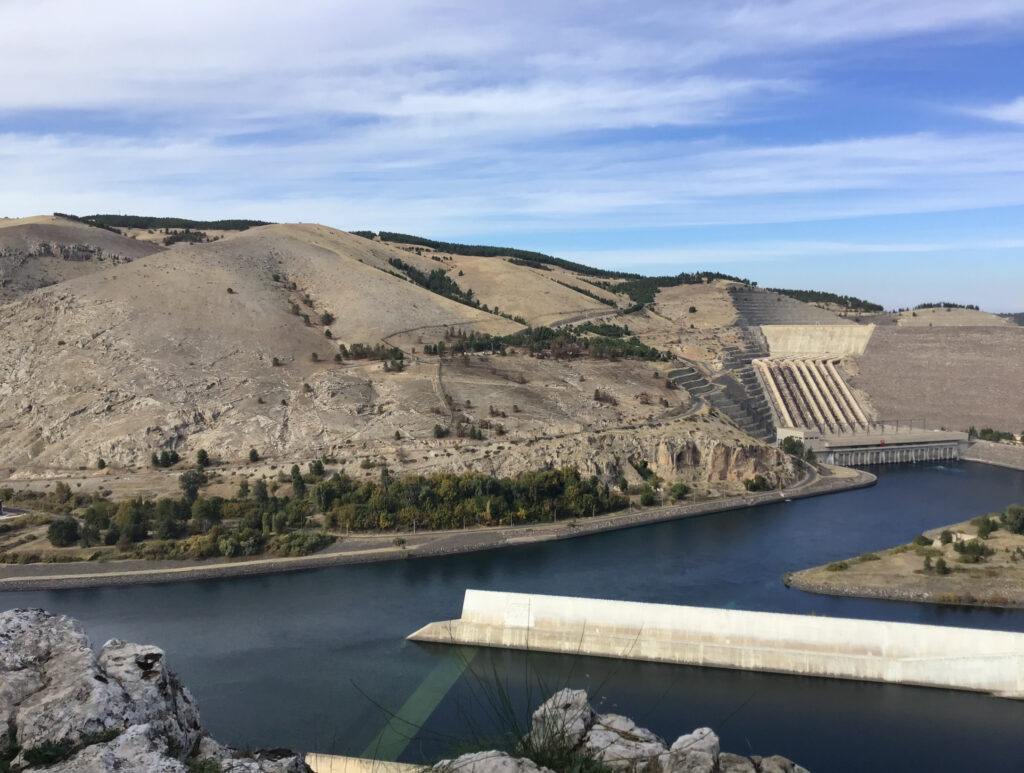
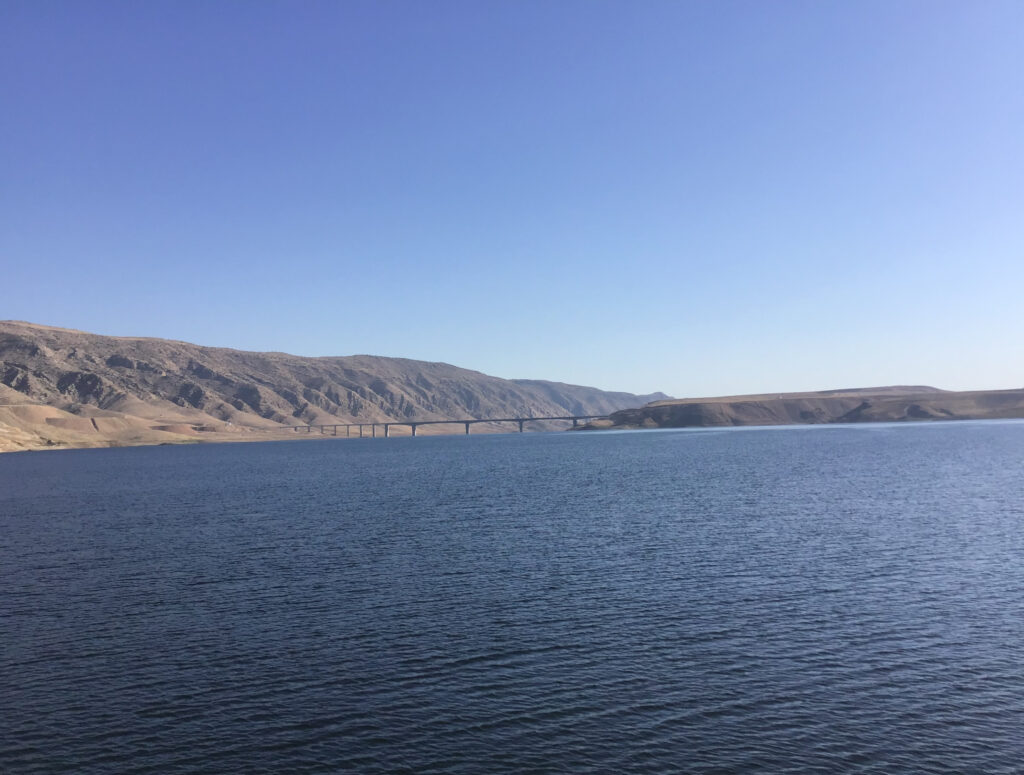
Geology and Ecoregions of Mesopotamia
Mesopotamia’s geology and ecoregions are closely tied to its location between the Tigris and Euphrates rivers. The interplay of its geological foundations and ecoregional diversity created an environment that sustained some of the earliest human civilizations.
1. Geology of Mesopotamia
A. Geological Foundations
• Alluvial Plains:
• The southern part of Mesopotamia (modern-day Iraq and Kuwait) consists of vast alluvial plains formed by sediment deposition from the Tigris and Euphrates rivers over millennia.
• These plains are rich in silt and clay, making them highly fertile for agriculture.
• Fluvial Sediments:
• The geology of Mesopotamia is dominated by riverine processes. Sediments deposited by the rivers include sand, silt, and clay, creating fertile soil layers.
• In some areas, the buildup of saline deposits due to evaporation posed challenges for long-term farming.
• Tectonic Setting:
• Mesopotamia lies at the edge of the Arabian Plate, which converges with the Eurasian Plate to the north.
• This tectonic activity created the Zagros Mountains to the northeast and shaped the region’s drainage patterns.
• Limestone and Gypsum:
• In the northern parts of Mesopotamia, foothills and plains contain limestone and gypsum bedrock, a result of ancient marine sedimentation.
• Petroleum Reserves:
• The southern part of Mesopotamia, especially near the Persian Gulf, contains significant petroleum reserves. These deposits formed in ancient sedimentary basins during the Mesozoic and Cenozoic eras.
B. Hydrology
• The rivers Tigris and Euphrates are the primary geological forces in Mesopotamia, shaping the land through erosion, sedimentation, and seasonal flooding.
• Ancient lake and marsh formations, such as the Mesopotamian Marshes, are remnants of Holocene hydrological changes.
2. Ecoregions of Mesopotamia
Mesopotamia falls within the Palearctic realm and includes several distinct ecoregions based on climate, topography, and vegetation.
A. Tigris-Euphrates Alluvial Salt Marsh
• Location:
• Found in southern Mesopotamia, primarily in Iraq and parts of Iran and Kuwait.
• Characteristics:
• The region is dominated by extensive marshlands, swamps, and wetlands where the Tigris and Euphrates rivers meet.
• These marshes are a vital habitat for birds, fish, and aquatic plants.
• Vegetation:
• Dominated by reeds, sedges, and grasses like Phragmites and Typha.
• Biodiversity:
• Important for migratory bird species and home to the Euphrates softshell turtle.
• Human Interaction:
• Historically, these wetlands supported the Marsh Arabs, who practiced traditional fishing and reed house-building.
B. Mesopotamian Shrub Desert
• Location:
• Extends across parts of central Iraq, northeastern Syria, and southeastern Turkey.
• Characteristics:
• A semi-arid desert ecosystem with sparse vegetation, located between the fertile floodplains and surrounding deserts.
• Vegetation:
• Includes drought-resistant shrubs like tamarisk, sagebrush, and small patches of grass.
• Wildlife:
• Home to gazelles, jackals, and various rodent species.
• Human Use:
• Historically used for grazing livestock and caravan routes.
C. Zagros Foothill Grasslands
• Location:
• Found in the northeastern part of Mesopotamia, near the Zagros Mountains.
• Characteristics:
• Rolling grasslands with higher rainfall than the central and southern parts of Mesopotamia.
• Vegetation:
• Includes grasses, wildflowers, and small shrubs.
• Biodiversity:
• Supports herds of wild sheep and goats, as well as predatory birds like eagles and hawks.
• Agriculture:
• This region was one of the early centers of dry farming in Mesopotamia.
D. Syrian Desert
• Location:
• Stretches across western Mesopotamia, including parts of Syria and Iraq.
• Characteristics:
• A true desert with rocky terrain, sandy areas, and very sparse vegetation.
• Vegetation:
• Includes xerophytic plants like saltbush and acacia.
• Wildlife:
• Inhabited by desert-adapted species such as camels, desert foxes, and lizards.
• Human Use:
• Historically used as a grazing area for nomadic herders.
E. Upper Mesopotamian Grasslands
• Location:
• Northern Mesopotamia, including parts of southeastern Turkey and northeastern Syria.
• Characteristics:
• More temperate than the southern regions, with higher rainfall and fertile soils.
• Vegetation:
• Grasses, cereal crops (e.g., wheat and barley), and scattered trees like oaks.
• Human Impact:
• This region was a center of early agriculture and urbanization, with major sites like Nineveh and Harran.
3. Environmental Challenges
• Soil Salinization:
• In southern Mesopotamia, the high evaporation rates and poor drainage led to the buildup of salts in the soil, reducing agricultural productivity over time.
• Flooding and Drought:
• Seasonal floods provided fertile silt but were unpredictable and destructive without effective water management.
• Desertification:
• Overgrazing, deforestation, and climate changes have expanded arid zones in parts of Mesopotamia.
4. Historical Impacts of Geology and Ecoregions
The geology and ecoregions of Mesopotamia profoundly shaped its civilizations:
• Agriculture: The fertile alluvial plains enabled large-scale irrigation and the rise of the first cities and states, such as Sumer and Babylon.
• Architecture: The lack of stone in southern Mesopotamia led to the use of mudbrick for construction, seen in ziggurats and other structures.
• Trade: The scarcity of certain resources, like metals and timber, necessitated extensive trade networks with neighboring regions such as Anatolia and the Indus Valley.
• Biodiversity: The marshlands and grasslands supported a variety of wildlife that contributed to the livelihoods of ancient Mesopotamians.
Conclusion
The geology and ecoregions of Mesopotamia created a landscape of contrasts, from the fertile floodplains of the south to the rugged grasslands of the north and the arid deserts of the west. This diversity supported the development of one of humanity’s earliest and most influential civilizations, while also presenting challenges that spurred innovations in agriculture, water management, and trade.
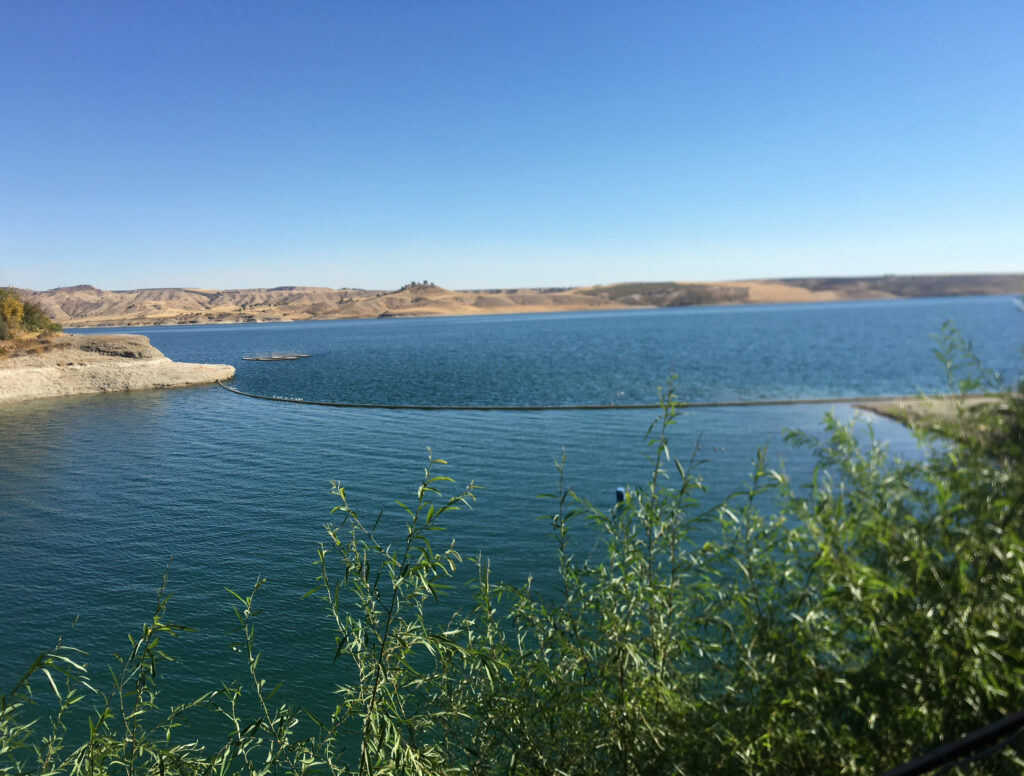
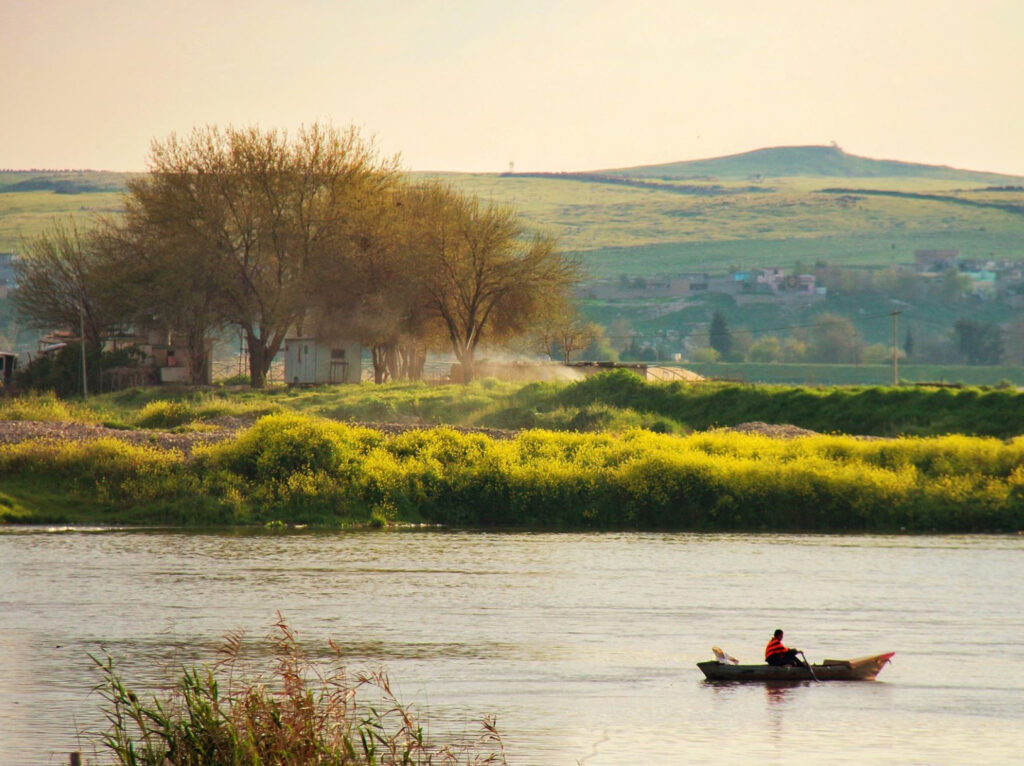
Mesopotamia, often referred to as the “Cradle of Civilization,” witnessed the rise and fall of some of the most significant cultures and empires in human history. These civilizations evolved in sequence, influencing one another and shaping the development of urban society, governance, religion, and culture. Below is a chronological sequence of the key civilizations and historical periods in Mesopotamia:
1. Prehistoric Period (c. 10,000–3500 BCE)
Natufian and Neolithic Periods (c. 10,000–6000 BCE)
• Early settlements began with the transition from hunting and gathering to agriculture.
• Small villages like Tell Abu Hureyra emerged in northern Mesopotamia.
• Introduction of farming (wheat, barley) and domestication of animals (sheep, goats).
Ubaid Period (c. 6000–4000 BCE)
• The first significant cultural horizon in southern Mesopotamia.
• Key developments:
• Irrigation-based agriculture.
• Construction of large communal buildings (proto-temples).
• Pottery characterized by geometric designs.
• Villages expanded into towns, such as Eridu, considered the earliest city in Mesopotamia.
Uruk Period (c. 4000–3100 BCE)
• The rise of the first true cities, such as Uruk.
• Innovations:
• Development of cuneiform writing, initially for record-keeping.
• Monumental architecture, including ziggurats.
• Emergence of social hierarchies and organized religion.
2. Early Bronze Age (c. 3100–2000 BCE)
Early Dynastic Period (c. 2900–2350 BCE)
• City-states flourished across southern Mesopotamia (Sumer).
• Key city-states: Ur, Uruk, Lagash, and Kish.
• Sumerian Civilization:
• Society structured around temples and priest-kings (ensi).
• Development of law, literature, and mathematics.
• Famous works like the Epic of Gilgamesh originated in this period.
• Frequent conflicts between city-states for resources and control.
Akkadian Empire (c. 2334–2154 BCE)
• Founded by Sargon of Akkad, the first known empire in history.
• Unified much of Mesopotamia under centralized rule.
• Spread of Akkadian language and culture.
• Decline due to invasions (Gutians) and internal strife.
3. Middle Bronze Age (c. 2000–1500 BCE)
Ur III Dynasty (c. 2112–2004 BCE)
• Often referred to as the Neo-Sumerian Period.
• Centered in Ur, this dynasty briefly revived Sumerian power.
• Innovations in administration, including standardized weights and measures.
• Collapse due to invasions by the Elamites and the rise of Amorite kingdoms.
Old Babylonian Period (c. 2000–1595 BCE)
• Rise of the Amorites, a Semitic people, who established city-states like Babylon.
• Hammurabi of Babylon:
• Known for the Code of Hammurabi, one of the earliest written legal codes.
• Expanded Babylonian control over much of Mesopotamia.
• Advances in literature, law, and astronomy.
• Decline following the Hittite sack of Babylon in 1595 BCE.
4. Late Bronze Age (c. 1500–1200 BCE)
Kassite Period (c. 1595–1155 BCE)
• The Kassites, a mountain people, ruled Babylon after the Hittite invasion.
• Stability and cultural continuity marked their reign.
• Advances in art and trade, particularly with neighboring regions like Egypt and the Indus Valley.
Assyrian Kingdom (c. 1500–911 BCE)
• In northern Mesopotamia, Assyria began to emerge as a regional power.
• Early Assyrian kings expanded their territory and influence through trade and warfare.
5. Iron Age (c. 1200–539 BCE)
Neo-Assyrian Empire (c. 911–609 BCE)
• Assyria became the dominant power in Mesopotamia and the Near East.
• Key achievements:
• Large-scale conquests under kings like Tiglath-Pileser III, Sargon II, and Ashurbanipal.
• Construction of monumental cities like Nineveh and Dur-Sharrukin.
• Extensive use of terror tactics and deportation policies to control populations.
• Decline due to internal rebellion and invasions by the Babylonians and Medes.
Neo-Babylonian Empire (c. 626–539 BCE)
• Also known as the Chaldean Dynasty, this period marked a revival of Babylonian culture.
• Nebuchadnezzar II:
• Famous for constructing the Ishtar Gate and possibly the Hanging Gardens of Babylon.
• Conquered Jerusalem and exiled the Jews (Babylonian Captivity).
• Conquered by Cyrus the Great of Persia in 539 BCE.
6. Achaemenid Persian Period (539–331 BCE)
• Mesopotamia became a province (satrapy) of the Persian Empire.
• Cyrus the Great allowed religious and cultural freedom, fostering stability.
• Continued use of cuneiform for administrative purposes.
7. Hellenistic Period (331–141 BCE)
• After Alexander the Great defeated the Persians, Mesopotamia was incorporated into the Seleucid Empire.
• Greek culture blended with Mesopotamian traditions, creating a period of cultural syncretism.
• Decline due to Parthian conquests.
8. Parthian and Sassanian Periods (141 BCE–651 CE)
• Parthian Empire:
• Mesopotamia became a contested region between the Parthians and the Romans.
• Sassanian Empire:
• Mesopotamia was a cultural and economic hub within the Persian Sassanian Empire.
• The region remained a center of learning, particularly in medicine and astronomy.
9. Islamic Period (7th Century CE Onward)
• Conquered by Arab armies in the 7th century, Mesopotamia became part of the Islamic Caliphate.
• Renamed Iraq, with Baghdad established as the capital of the Abbasid Caliphate in 762 CE.
• Baghdad became a center of learning and culture during the Islamic Golden Age.
10. Modern Period
• Mesopotamia’s significance continued under various empires, including the Ottoman Empire.
• Today, it forms parts of modern Iraq, Syria, Turkey, and Kuwait, retaining its legacy as one of humanity’s most historically rich regions.
Conclusion
The civilizations of Mesopotamia developed in a dynamic sequence, from early city-states to powerful empires like the Sumerians, Akkadians, Assyrians, and Babylonians. This region’s legacy includes foundational contributions to writing, law, architecture, and science, making it a cornerstone of human history.
The civilizations of Mesopotamia made groundbreaking contributions to human history, laying the foundations for modern society. Their achievements spanned various fields, from writing and governance to science and art. Below is a list of major contributions and inventions by Mesopotamian civilizations:
1. Writing and Communication
• Cuneiform Script (c. 3100 BCE):
• Invented by the Sumerians, it is the world’s first writing system.
• Initially developed for record-keeping (trade and taxes), it evolved to encompass literature, law, and religious texts.
• Epic of Gilgamesh:
• The world’s first great work of literature, a mythic epic exploring themes of heroism, mortality, and friendship.
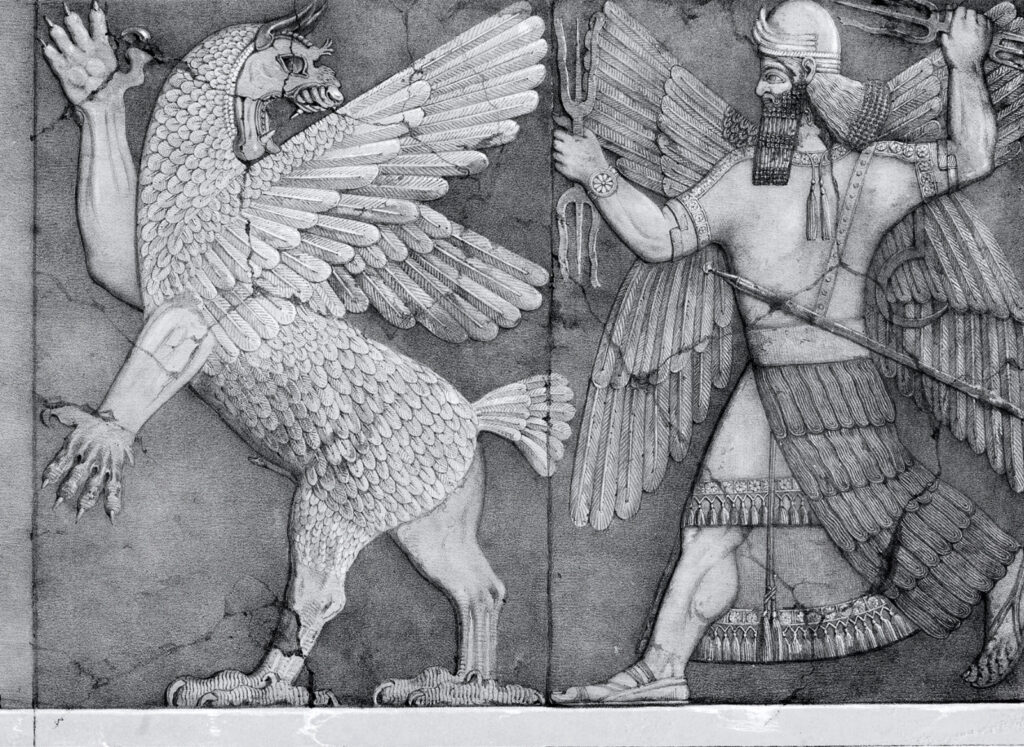
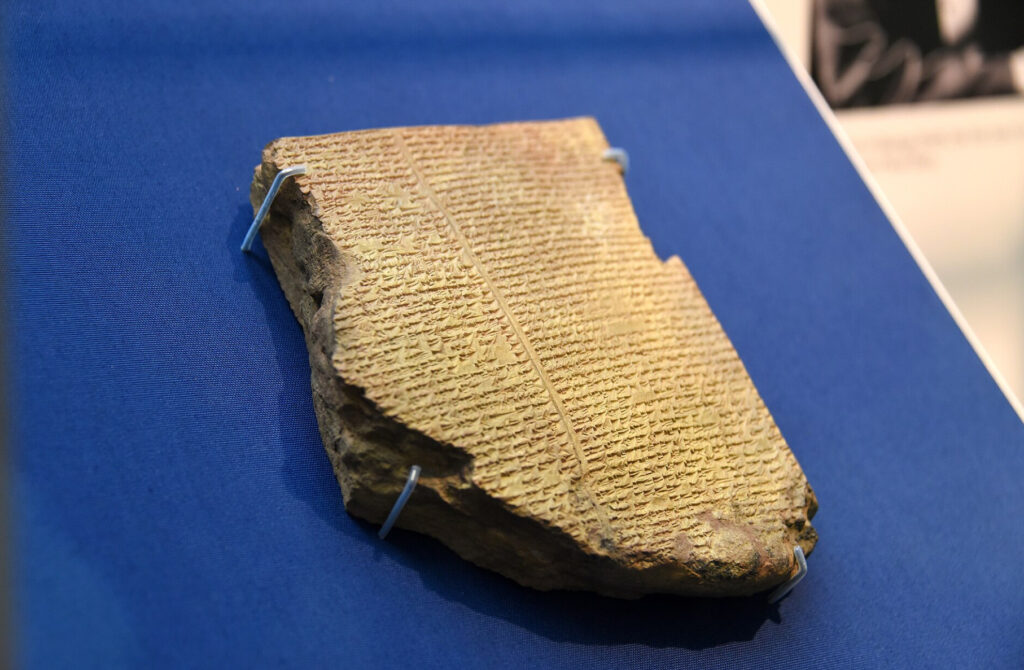
2. Governance and Law
• Code of Ur-Nammu (c. 2100 BCE):
• The earliest known law code, attributed to the Sumerian king Ur-Nammu.
• Focused on justice, with fines as common penalties.
• Code of Hammurabi (c. 1754 BCE):
• A detailed Babylonian legal code inscribed on a stone stele.
• One of the first comprehensive legal systems, based on the principle of lex talionis (“an eye for an eye”).
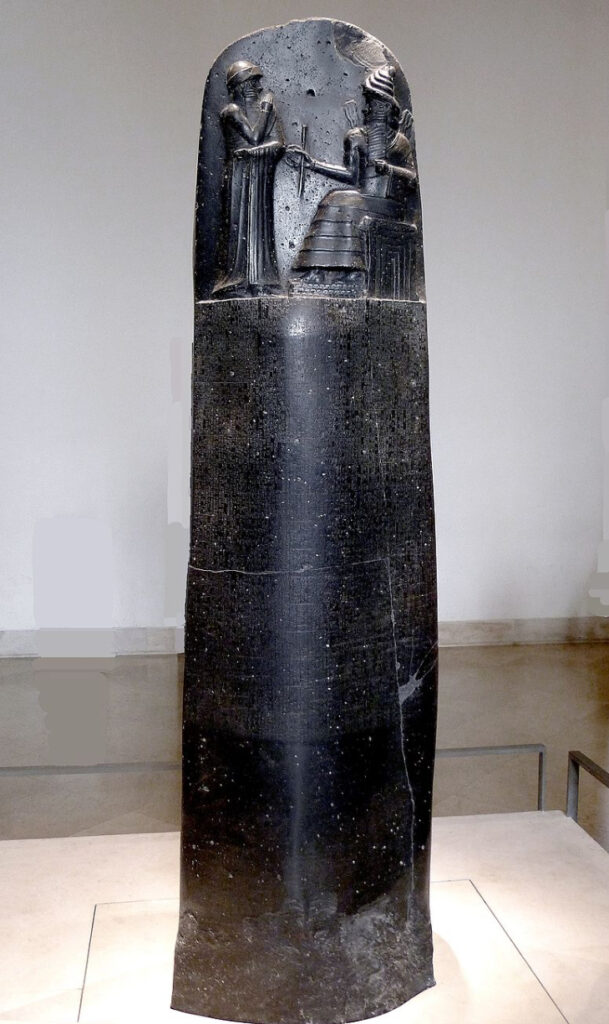
3. Agriculture and Irrigation
• Irrigation Systems:
• Constructed canals, dikes, and reservoirs to manage the seasonal flooding of the Tigris and Euphrates rivers.
• Enabled large-scale farming, supporting urbanization.
• Plow:
• The Sumerians invented the ox-drawn plow, revolutionizing agriculture.
• Crop Specialization:
• Cultivated wheat, barley, dates, and flax, essential for food and textiles.
4. Mathematics and Astronomy
• Base-60 Number System:
• Sumerians developed a sexagesimal (base-60) system, still used for measuring time (60 seconds, 60 minutes) and angles (360°).
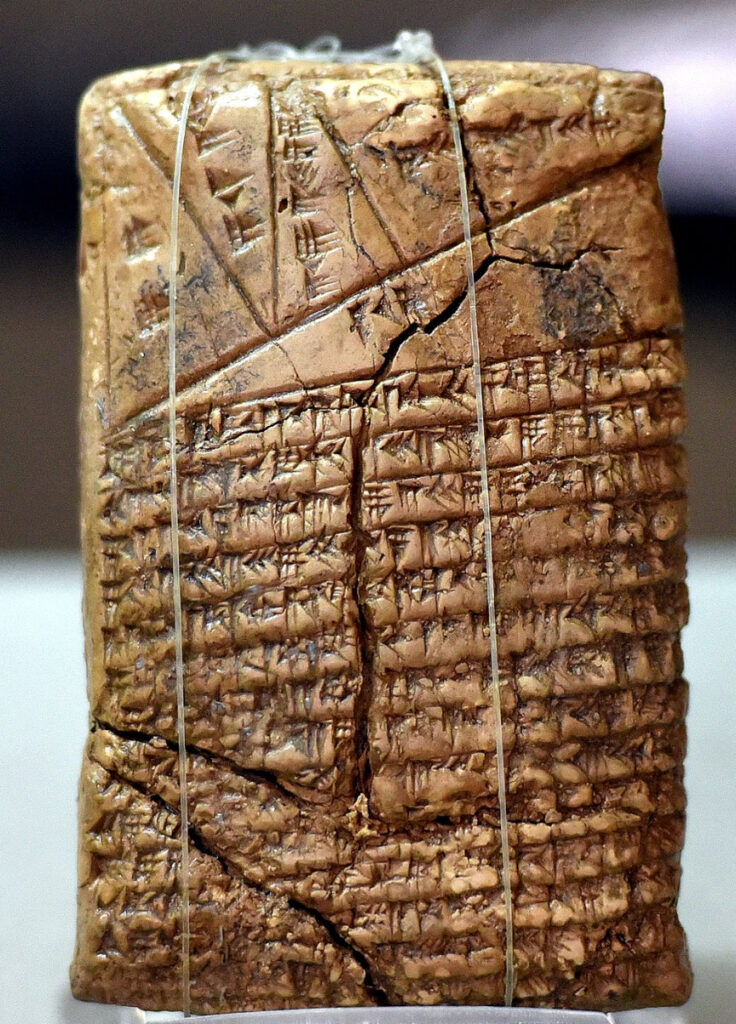
• Geometry:
• Applied in land measurement and construction, including the design of ziggurats.
• Calendars:
• Created lunar calendars for agricultural planning and religious observances.
• Astronomy:
• Identified celestial bodies like Venus and tracked planetary movements.
• Early predictions of eclipses and seasonal changes.
5. Architecture and Engineering
• Ziggurats:
• Stepped temple towers that served as religious centers, with the most famous being the Ziggurat of Ur.
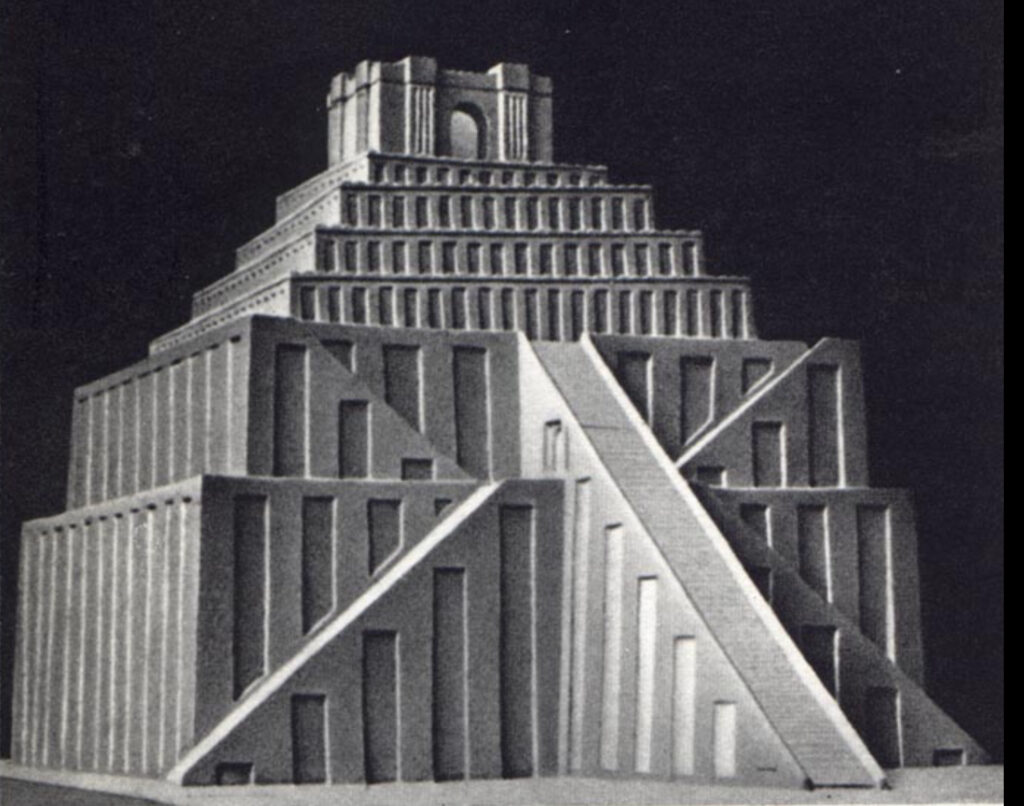
• Mudbrick Construction:
• Innovated durable mudbrick techniques, enabling large-scale urban building.
• City Planning:
• Laid out cities with walls, palaces, temples, and marketplaces.
6. Trade and Economy
• Standardized Measures:
• Created systems for weights and measures to facilitate trade.
• Trade Networks:
• Established extensive trade routes connecting Mesopotamia to Anatolia, the Indus Valley, and Egypt.
• Exported textiles and grain, imported metals, timber, and luxury goods.
• Invention of Money:
• Used silver, barley, and other commodities as early forms of currency.
7. Religion and Mythology
• Polytheistic Religion:
• Developed complex pantheons of gods, each associated with natural forces or human activities.
• Key deities: Anu (sky), Enlil (wind), Ishtar/Inanna (love and war), and Marduk (Babylonian chief god).
• Mythology:
• Stories like the creation myth Enuma Elish explained the origins of the world and divine order.
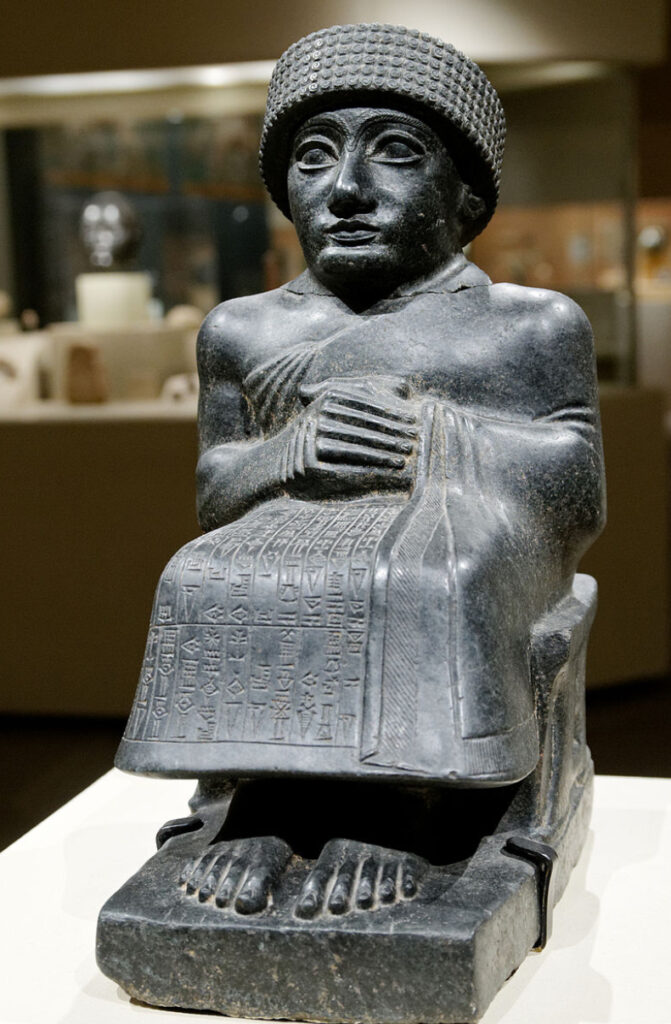
8. Medicine and Science
• Medical Texts:
• Wrote some of the earliest medical treatises, detailing diagnoses and treatments for diseases.
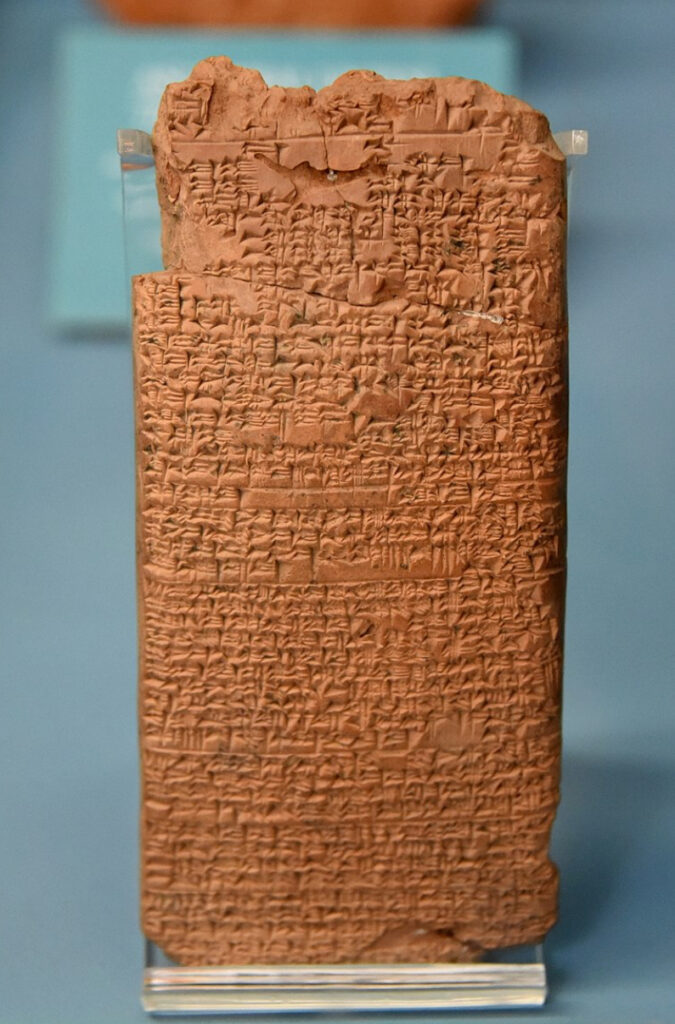
• Herbal Medicine:
• Used plants and minerals for healing purposes.
• Observational Science:
• Early studies of the environment, including river dynamics and weather patterns.
9. Transportation and Technology
• The Wheel (c. 3500 BCE):
• Invented by the Sumerians for pottery-making and later adapted for carts and chariots.
• Sailboats:
• Developed for trade and travel along rivers and the Persian Gulf.
• Metalworking:
• Advanced bronze tools and weapons, as well as early uses of iron.
10. Art and Culture
• Cylinder Seals:
• Small engraved stones used to mark property or documents, functioning as early personal identification.
• Statues and Reliefs:
• Created intricate statues of deities and rulers, as well as narrative reliefs depicting military victories or myths.
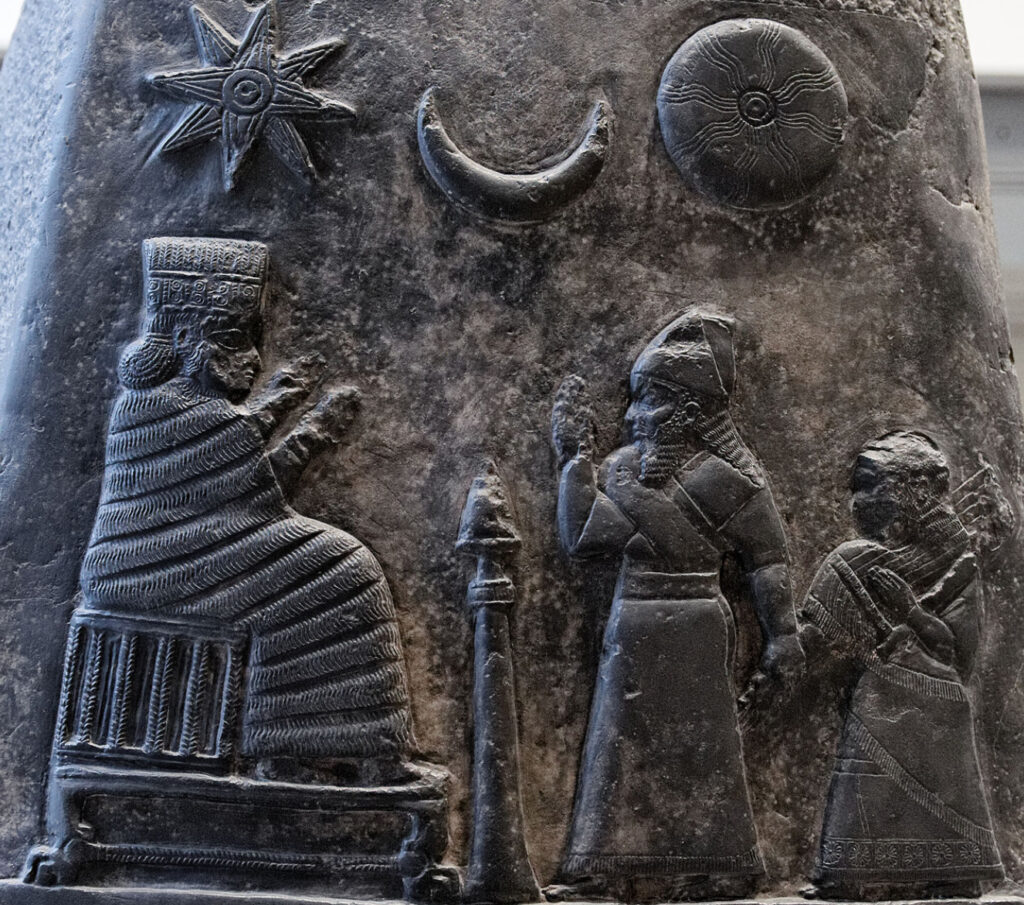
• Music:
• Invented musical instruments like lyres and harps.
• Developed early musical notation systems.
11. Military Innovations
• Fortifications:
• Built walls and fortresses to defend cities.
• Chariots:
• Used in warfare for mobility and tactical advantage.
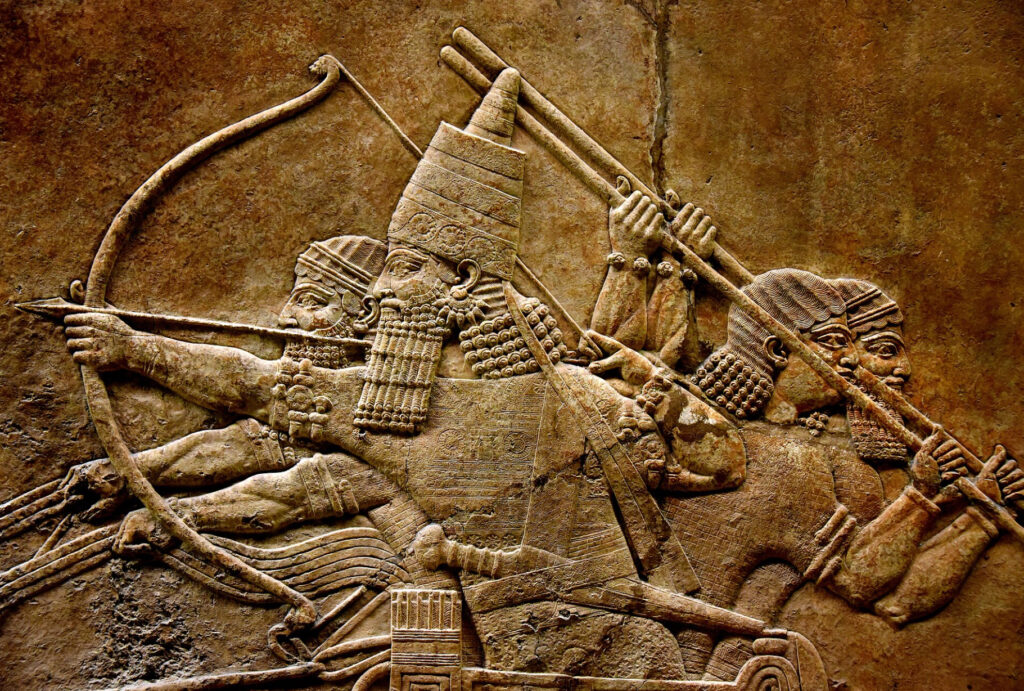
• Siege Warfare:
• Advanced techniques for besieging fortified cities.
12. Education and Knowledge Systems
• Schools (Edubbas):
• Established institutions for scribes to learn writing, mathematics, and law.
• Archives and Libraries:
• Collected texts on clay tablets, preserving records of governance, trade, and literature.
• The library of Ashurbanipal at Nineveh is one of the most famous examples.
Legacy
The contributions of Mesopotamian civilizations—especially the Sumerians, Akkadians, Babylonians, and Assyrians—have profoundly influenced human progress. Their inventions, from writing and legal codes to mathematics and irrigation, laid the groundwork for later civilizations in the ancient Near East and beyond.
